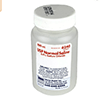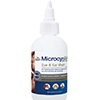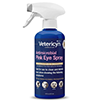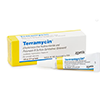Foamy Bubbles in a Chicken’s Eye: Causes & Treatment
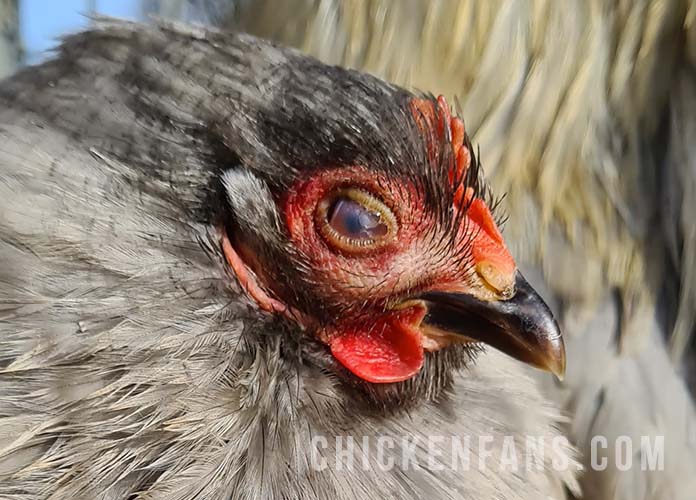

Chicken Fans is reader-supported. When you buy through our links, we may earn a commission. Learn more about our privacy policy and disclaimer.
When a chicken has bubbles in the eye, it’s a clear sign something is wrong. Foamy eyes can indicate a severe underlying condition. With so many possible causes, it isn’t easy to put a diagnosis. How do you tackle this?
First, let’s see why bubbles form in tearing eyes, and then we’ll go in-depth on all the possible causes.
Why does a chicken have foamy bubbles in the eye?
Foamy eye or bubble eye is a symptom of an underlying disease. The frothy bubbles in the corner of the watery eye result from excessive tearing. Usually, it indicates upper respiratory infections, but it can also be another type of eye infection or just an eye injury.
Provide First Aid for Foamy Eyes
There are many reasons for bubbly eyes, but washing the eye can provide instant relief and clear sight. This will always help recovery.
Several over-the-counter products are available to provide first aid and supportive care to treat eye conditions.
- Rinse the eye with saline or MicrocynAH Eye Wash to clean the eye. Irrigation of the eye will prevent further infections and helps your chickens see clearly.
- To rinse, turn the chicken on its side and drop the saline solution in the eye. Try to keep the eye open while flushing.
- For eye infections, apply Terramycin 2 to 4 times daily. Terramycin is a broad-spectrum antibiotic treatment.
- Avoid ointments with cortisone as the immunosuppression and hepatopathies negatively affect healing.
When treating your chickens, always ensure your birds have a dust-free environment with proper ventilation.
How to Diagnose Eye Problems?
You have to check for other symptoms to get an idea of what’s going on. If the damage is limited to the eye, it might be something as innocent as dust in the eye. However, if there is nasal discharge and pus, you might be dealing with respiratory issues due to viral or bacterial infections.
First on our list are the diseases that only affect the eye.
Bubble Eye conditions that only affect the chicken’s eye
If there are no other clinical symptoms like sneezing, coughing, or nasal discharge, the problem might be local to the eye.
Common problems are:
- eye injury
- ammonia irritation
- blocked tear duct
- foreign particle
A less common problem is an eye worm infection.
Eye injuries
Eye injuries are common in backyard chickens. The birds play in dirty dust that can irritate the eyes and hop through twigs and thornbushes. Hens peck on each other, and rooster spurs can be sharp as a knife.
Unfortunately, eye injuries are tricky to diagnose by looking at the eye, so it’s best to contact an experienced vet.
Ammonia irritation
Ammonia irritation happens all too frequently. When bacteria digest chicken droppings, they produce ammonia gases. These fumes have a pungent odor and can be toxic to chickens. They will irritate both the eyes and lungs of chickens, resulting in cloudy eyes, severe eye tearing, and bubbles in the eyes.
If you open the chicken coop and you can’t breathe due to the foul smell, there is too much ammonia in the chicken coop.
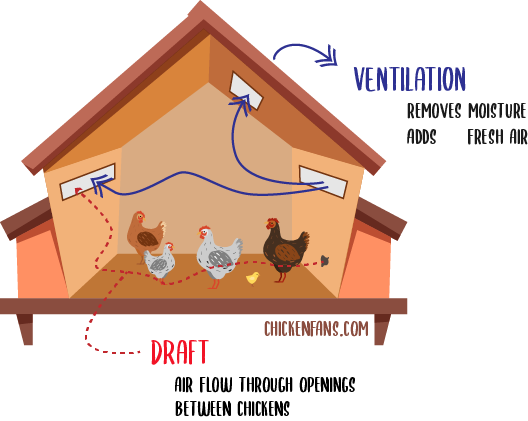
Proper ventilation is vital to get rid of excessive ammonia fumes. Provide ventilation openings on the top of the chicken coop. Doing so positions the airflow above their head, and they won’t sit in the draft. Also, make sure the flock has enough space. When in doubt, use our chicken coop calculator.
Blocked tear duct
Just like humans, chickens have tear ducts. These small tunnels drain the water in the eyes to the nasal cavities, the air-filled spaces behind the beak that connect the nostrils and the mouth.
A chicken’s eye is continuously wet to clear it from dust and dirt. In everyday situations, tears are drained and ultimately swallowed. But when the tear ducts are blocked, the water stays in the eye with the dirt, causing eye tearing, irritation, and foamy eyes. A veterinarian can solve this by flushing the duct.
Eye worm infection
An eye worm is a thin white worm that can infect a chicken’s eye. Chickens get infected by eating an infected Surinam cockroach or from contact with wild birds that are carriers of the eggs. The worm nestles in the corner of the eye, causing discomfort and watery or foamy eyes.
It’s a global problem, but (sub)tropical areas are the cockroach’s natural habitat. Infected chickens are scratching their eyes all the time, with the risk of creating extra eye injuries.
Direct contact with infected chickens allows the worm to spread through the flock. It is important to quarantine a bird if you notice odd behavior.
Respiratory infections causing Bubble Eye
When there are other symptoms present like
- coughing, sneezing, gaping,
- nasal discharge and pus,
- gurgling sounds,
- facial swelling,
chances are the bird is suffering from a respiratory infection. Chickens have an advanced respiratory system with lungs and multiple air sacs.
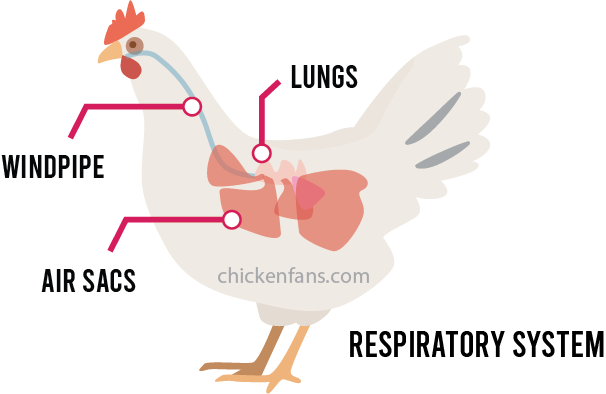
Common respiratory infections that can cause foamy eyes are:
- Chronic Respiratory Disease (CRD), aka Bulgy Eye or mycoplasmosis
- Infectious Bronchitis (IB)
- Infectious Coryza (IC)
- Infectious Laryngotracheitis (IL)
- Avian Influenza
Chronic Respiratory Disease and Infectious Coryza are bacterial infections and can be treated with antibiotics.
Infectious Bronchitis, Infectious Laryngotracheitis, and Avian Influenza are viral infections. For these conditions, antibiotics are only effective in preventing secondary bacterial infections. They can only be prevented with proper vaccination.
Bacterial Infections
Unfortunately, bacterial infections are not that uncommon.
- Chronic Respiratory Disease or Bulgy Eye is one of the most common bacterial infections worldwide. The scientific name is mycoplasmosis. It comes with all the above symptoms. Sometimes, you hear bubbling sounds when the chicken is breathing. It’s common to encounter foamy eyes and bubbly tears. Chronic Respiratory Disease can be treated with several antibiotics.
- Infectious Coryza is another widespread bacterial disease that spreads quickly in a flock. Apart from the above symptoms, the chicken’s face is swollen, and there is foul-smelling discharge on the nares and beak. Some birds have diarrhea. On top of the watery or foamy eyes, chickens can have eye discharge that can completely shut the eye closed. Infectious Coryza can also cause cloudy eyes in chickens.
Viral Infections
Viral infections are trickier to diagnose compared to bacterial infections. Some viral infections cause respiratory diseases that result in eye tearing:
- Infectious Bronchitis is a worldwide contagious disease caused by several coronavirus strains. It causes frothy tears and tiny bubbles in the eyes. The Infectious Bronchitis Virus damages the windpipe of the chicken, making it prone to secondary infections such as Chronic Respiratory Disease. Vaccination is not always successful since there are so many strains.
- Infectious Laryngotracheitis is a contagious disease caused by a herpes virus in the same family as the virus that causes Marek’s disease in chickens. It comes in two forms, a mild form, and a severe form. In the severe form, there is a significant impact on the respiratory system to the point where you can see blood in the mouth. Inflammation of the eye and eye discharge are typical symptoms of infectious laryngotracheitis, resulting in foamy eyes.
- Avian Influenza is another highly contagious viral infection that has many variants. Due to the many different strains, symptoms can differ a lot. The respiratory tract and sinuses are mostly affected by low pathogenic variants and often co-occur with bacterial infections. The corresponding eye infections result in red, watery, and sometimes foamy eyes.
Summary
Foamy eyes or bubble eyes are symptoms of an underlying condition. Sometimes the condition can be innocent and self-healing, but usually, it’s a sign of severe illness.
When the condition is local, only the eye might be affected. Local problems can result from an injury, ammonia irritation, a blocked eye duct, or an eye worm infection. However, other symptoms are present most of the time, like coughing, sneezing, gurgling sounds, and nasal discharge. These are symptoms of respiratory infections.
Respiratory infections are commonplace and a global problem. Bacterial infections that are a common cause of foamy eyes are Chronic Respiratory Disease and Infectious Coryza. Viral infections can also cause tiny bubbles in the watery eyes of a chicken. Typical examples include Infectious Bronchitis, Infectious Laryngotracheitis, and, last but not least, Avian Influenza.
If you want to read more about chicken health problems, symptoms, and diseases, check out our ‘Health Page‘. You’ll find a ‘Symptom Checker‘, a complete list of ‘Chicken Behavior‘, and an overview of the most common ‘Chicken Diseases‘. Or go to ‘The Classroom‘ and find a comprehensive list of all Chicken Fans articles.

Dr. Abrir A. is a licensed veterinarian with many years of experience on poultry farms and poultry feed. He has published several scientific articles on poultry diets, amino acids, and prebiotic usage in poultry. Dr. Ibrar is currently pursuing a Ph.D. in animal nutrition and nutritional diseases.
